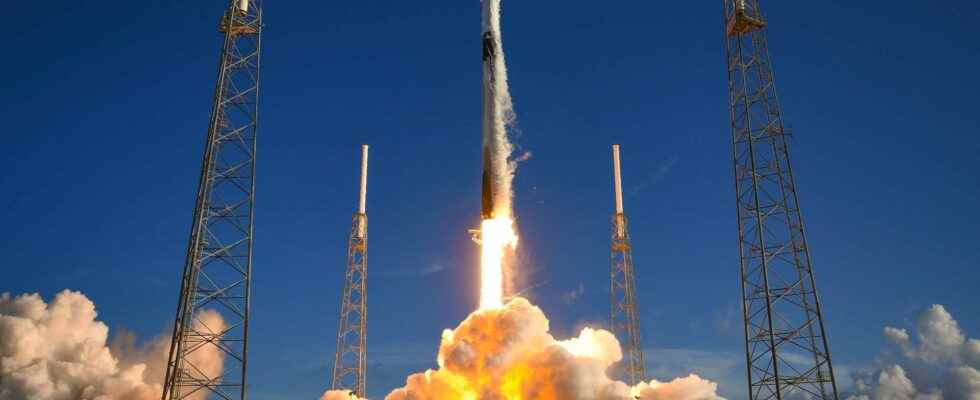You will also be interested
Last week, South Korea became the seventh country in the world to launch a probe to the moon. This East Asian country has an exploration program robotics of the Moon and asteroids, with Mars in focus, rather ambitious. Admittedly, this program is on a smaller scale than the big projects Americans, Europeans and Chinese who foresee a humane and lasting installation but he still envisages probes, landersrovers and sample return missions.
August 5, a pitcher Falcon 9 successfully launched KPLO (Korea Pathfinder Lunar Orbiter), the first South Korean lunar mission. Developed by the Korea Aerospace Research Institute (Kari), KPLO, also called Danuri, is expected to reach the Moon on December 16 for an observation mission expected to last at least a year.
It will settle in a polar orbit of about 100 kilometers from which it will carry out an observation mission of great interest. If this is extended beyond the first year of operation, it is planned to lower its orbit and bring it to just 70 kilometers from the lunar surface, or even less.
The launch of KPLO, also known as Danuri. Positioning in its polar orbit planned in four months. © Arirang News
KPLO carries six instruments including a camera provided by NASA. Among the main objectives of the probe are the identification of potential landing sites and the location of sources of water ice which are believed to be found in large numbers in the colder and darker regions of the south pole.
The probe will play a song by a famous South Korean K-pop group
KPLO also aims to test network space communications tolerant to the radiative environment of space. According to the South Korean Ministry of Science, this experiment is a world first. It must also lay the foundations for a Internet wireless” to link together the satellites around or near the Moon and the exploration equipment in activity on the lunar ground. To test this internet network, the probe will broadcast the song Dynamite by South Korean K-pop group BTS.
In short: South Korea shows its lunar ambitions
Article of Remy Decourt published on 07/11/2013
Recently a space power, South Korea has unveiled its ambitions and announced that it wants to send a probe around the Moon. A surface rover is also on the program.
Japan is often cited as an example in matter robotics, but in recent years, South Korea has made significant progress in this field, to the point of becoming a world reference. Its know-how and robotic skills have found apps advanced in many sectors such as medical,agriculture, transport, security and even defence. Today, South Korea is embarking on the space robotics.
Earlier this month, South Korean President Park Geun-hye announced an ambitious lunar program for 2020, with the sending of a probe around the Moon and the landing of a rover. An announcement that comes just six months after the first successful launch of its launcher KSLV-1 (Korea Space Launch Vehicle) and the orbiting of the satellite STSAT-2C. the Karithe Korea Aerospace Research Institute, has been working on a prototype lunar rover since 2010. However, due to technological delays for some space components, the Kari is in the process of forging a partnership with theAmes Research Center from NASA.
Weighing 20 kg, this rover is designed to travel several tens of kilometers around its landing site. It will carry out a plethora of exploratory activities. Significantly smaller and lighter than the 900 kg of Curiosity, it will have an equally large radius of action (40 km against 39). As the martian rover from NASA, it will use a nuclear battery. However, unlike that of Curiosity, which works with plutonium-238the South Korean battery will work using strontium 90, a nuclear reprocessing residue. Finally, if Curiosity is designed for an initial two-year mission to Mars, the 500g of strontium-90 of the South Korean rover will allow him to visit the Moon for a short month.
Interested in what you just read?
